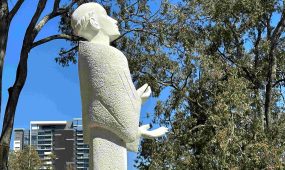Rediscovering forgotten history – why parish records are so important
People & History
“A recent case where history was thought to have been lost, but has been rediscovered, is the early church registers for St James’, Toowoomba. Up to a few months ago, it was thought that this church’s early registers were destroyed in a flood caused by burst water pipes under the original rectory where records were then stored. However, it turns out that the registers were not lost,” says Diocesan Archivist Michael Rogers
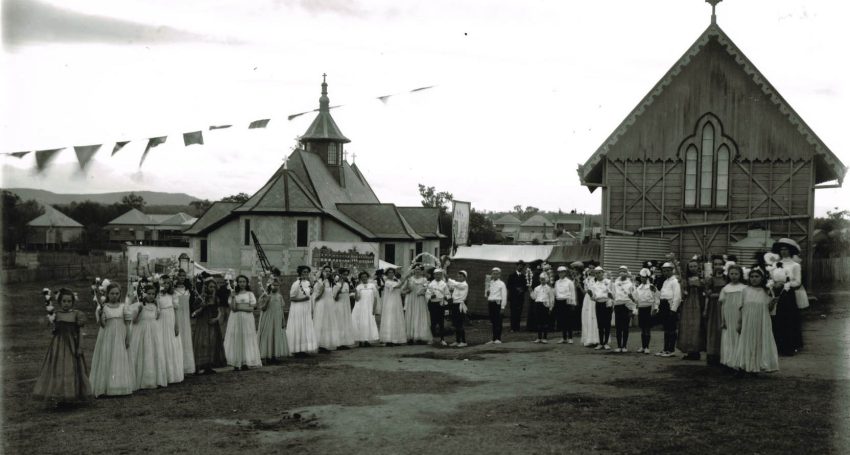
Regular readers of anglican focus would have seen my feature articles on the importance of keeping records – particularly, those created and kept by parishes.
Records such as church registers, Parish Council minutes, parish rolls and architectural plans document the religious history of the Diocese, providing a direct link to the social history of local communities.
Parishes are asked to preserve these records of significance and forward them to the Records and Archives Centre.
Related Story
 Features
Features
The management of parish records
I am also keen to receive images of churches. I have many images of people and events; however, infrastructure (churches, chapels, registries, halls) is often overlooked as potential Archive contributions.
I am happy to take good quality scans (properly identified) of photographs if the original is required by the parish. Certain types of media (such as glass plate negatives recently forwarded by The Parish of Laidley) may be better placed in the Records and Archives Centre, where they can be included in our digitisation programme.
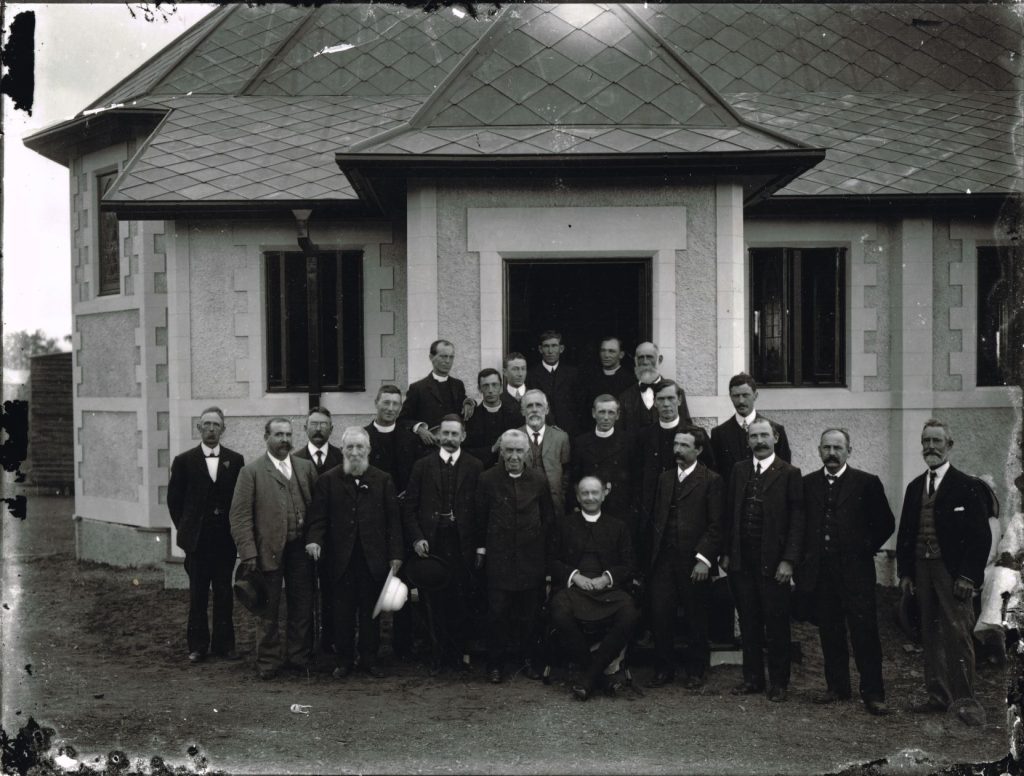
Clergy and Gordon Club (Laidley) members at the opening and consecration of St Saviour’s Church at Laidley (Archbishop Donaldson seated) on 21 June 1910
Parishes are also encouraged to consider sending me records from wider parts of the parish organisation that may have been forgotten. Over the last two years, Mothers’ Union branches have been very proactive in identifying and sending me their minutes and papers. However, the Archives does not have much in the way of branch records for other groups, such as Anglican Men’s Society and Girls’ Friendly Society (GFS) branches. There are also forgotten parts of parishes, such as Gordon Clubs, that have the potential to be rediscovered. The Rev’d Keith Rayner’s thesis on the History of the Church of England in Queensland contains further detail on Gordon Clubs, the GFS and other church organisations in Queensland.

Girls’ Friendly Society “guard of honour” for Queen Elizabeth II and Prince Philip’s visit to St John’s Cathedral, Brisbane in 1954
Unfortunately records are often placed or stored in inappropriate areas or where few know about them, leading to forgotten or lost history. It is often the case that someone may know where the records are, but the importance of remembering and caring for the information (both what it was, where it was, and why it was important) was forgotten.
A recent case where history was thought to have been lost, but has been rediscovered, is the early church registers for St James’, Toowoomba.
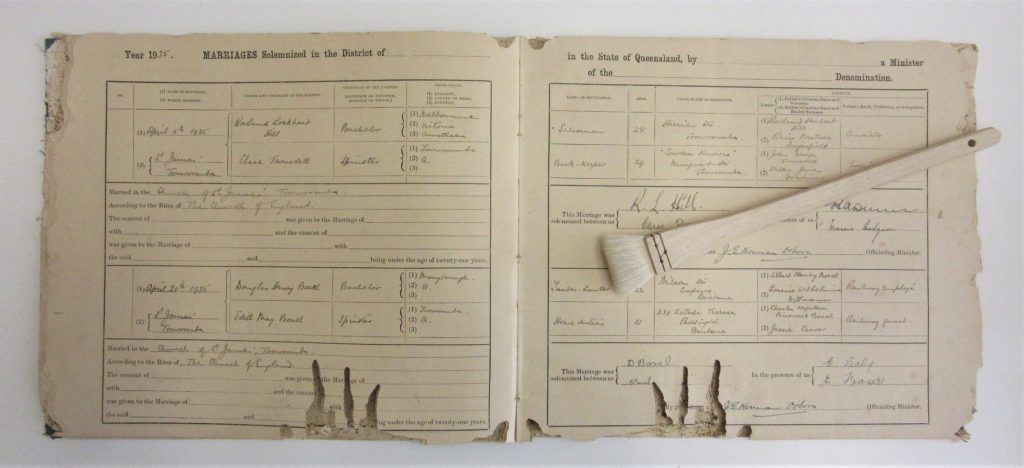
Marriage register for St James’, Toowoomba recently transferred to the Archives, showing pest damage
It was thought that this church’s early registers were destroyed in a flood caused by burst water pipes under the original rectory where records were then stored. However, it turns out that the registers were not lost – they were placed somewhere and then forgotten about. It took St James’ parishioner Lyn Hodgson to be in the right place at the right time. Her chance meeting in June 2009 with former Warden Mervyn Coote led to their rediscovery.
Lyn asked the former Warden, while she was writing a history to celebrate the 140th anniversary of St James’, if he knew about any old parish records.
The former Warden (who has since passed away) noted that he had been present at the demolition or the original rectory in 1963, in preparation for the building of the present rectory. He told the builders that perhaps he should have “those boxes”, which looked like they contained records.
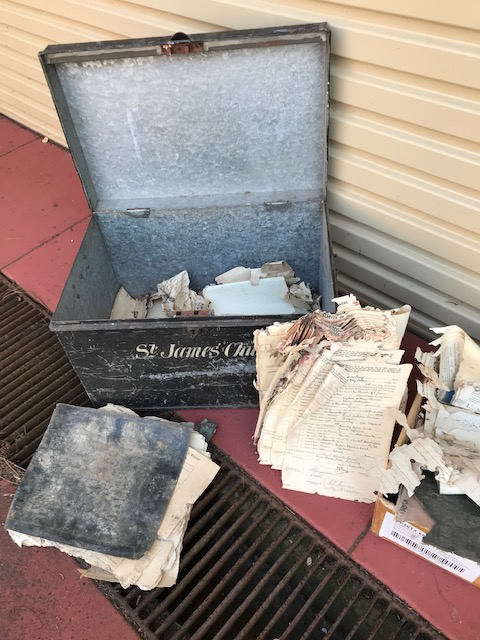
Tin box where the St James’, Toowoomba 1874-1950 marriage registers were located
The former Warden delivered some boxes of records to Lyn to assist her in the writing of the parish’s history (the Archives holds copies of the historical publication). The boxes included a tin box marked “St James’ Church”. As you can see from the image, the records look very damaged by water and vermin. Underneath the very dilapidated pages, Lyn found marriage registers from 1874 to 1956 and a baptism register for 1912 to 1917.
In 2017, the Toowoomba Historical Society received a donation of boxes containing church registers for St James’. Lyn, who was a member of the society, was asked by the Society’s President to pass them on to the Diocesan Archives. These included early Baptism Registers (from 1860) and Service Registers for the 1920s and 1930s.

The first entries in the Baptism register for St James’, Toowoomba in 1860
Lyn conducted some basic conservation of the records and one of the Parish office volunteers created an index of the Baptisms from 1867 to 1906. These registers, and the other registers Lyn acquired in 2009, have been delivered to the Archives. As Lyn noted:
“I feel very blessed that this has been my contribution to the history of St James’ Parish and also of the city of Toowoomba. Only my chance meeting of the former Warden opened this door of opportunity.”
I would certainly encourage all parishes to follow Lyn’s lead and ask around as to what is being stored in the parish.
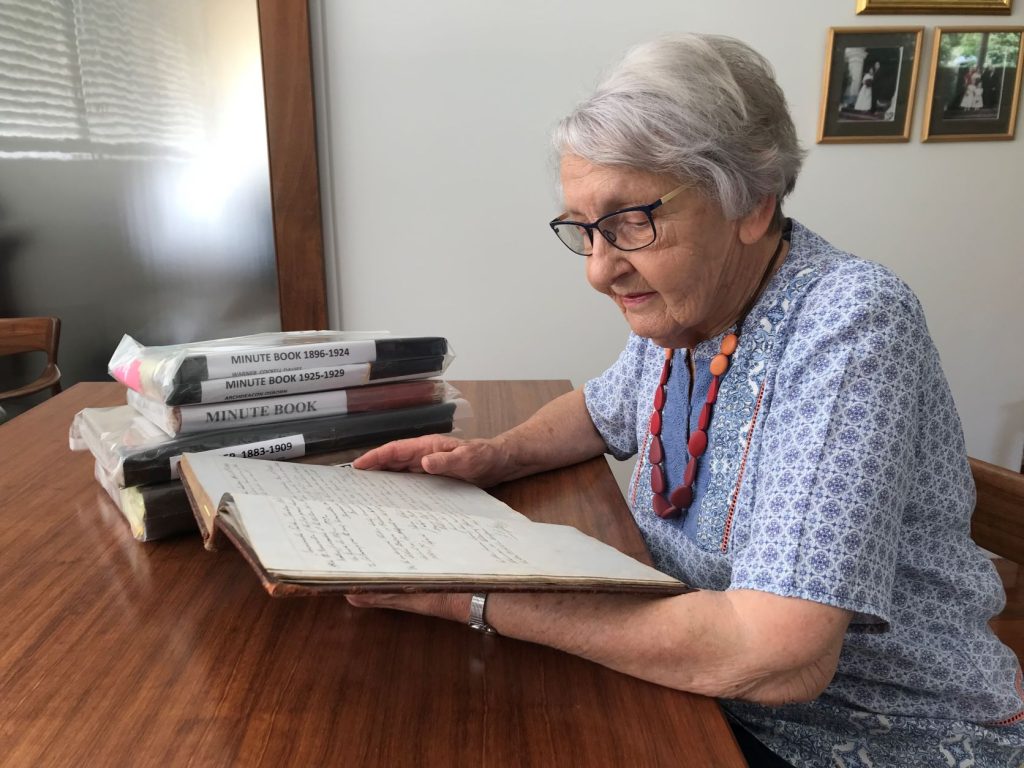
Parishioner Lyn Hodgson looking over the Parish Council minutes for St James’, Toowoomba in 2022
As part of looking out for historical records (and asking the right questions to the right people), parishes should conduct regular clean-ups of records, which should include checks regarding where all records are being stored. This could be part of the regular inventory of all parish property that should be kept and maintained. It is always a good idea to check out-of-the-way areas, such as attics, basements and outside storage sheds. As I have noted before, parishes should be aware of issues and risks, including mould, pests, water and using items that may damage records (such as metal pins, clips or staples).
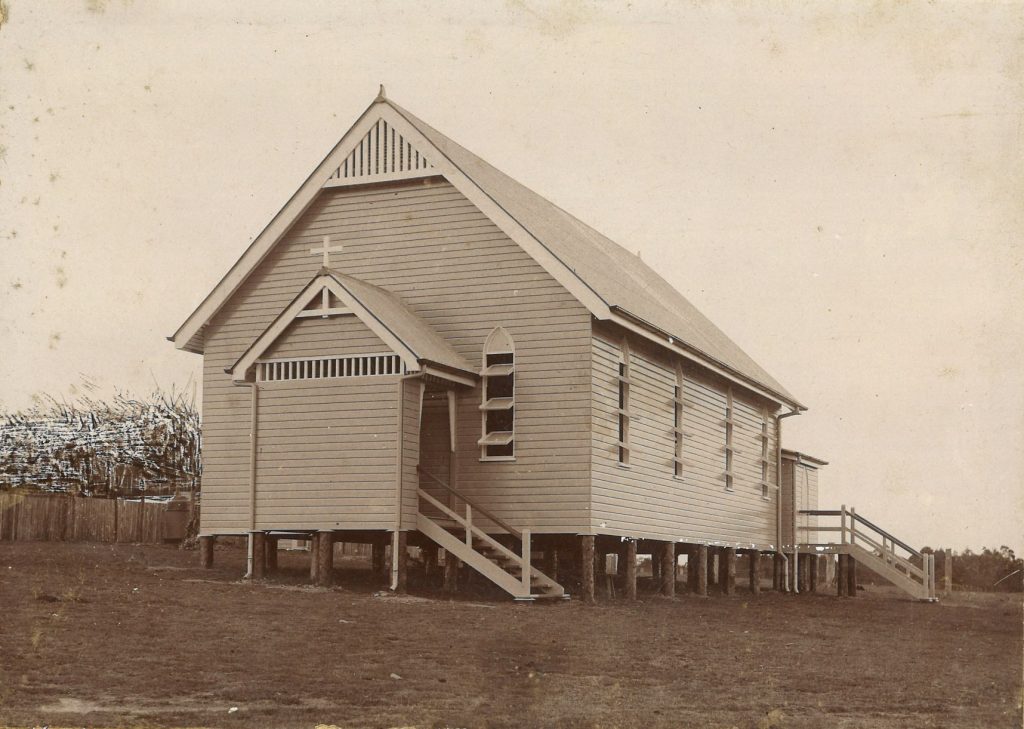
First Morningside Anglican Church (Church of the Ascension) circa 1912
Parishes should also keep all clergy and officials aware of the need to manage records appropriately, especially when they commence or move on from a role. Guidance for parishes and for clergy has been reviewed and updated, most notably for the keeping of church registers.
Parishes may have also noticed the changed requirements for the Registration of Marriages, as recently updated by the Federal Government (Attorney-General’s Department). New guidance is on The ARC about this change, as well as guidance on how church registers need to be managed and how entries should be recorded. The ‘Diocesan Handbook’ will also be updated soon to reflect this and other changed requirements.

Cemetery plan from funeral (burial) register (Mitchelton) held in the Archives
All Retention, Disposal and Access Schedules, including for parish records and general administrative records, are accessible on The ARC through a filtered searchable listing. Links are included on The ARC’s Records and Archives page and the Information Management Framework page. As always, parishes are encouraged to contact me for advice and guidance.
Author’s note: I would like to express my sincere appreciation to Lyn Hodgson for saving the records, as well as contributing extra detail and images for this feature piece.





